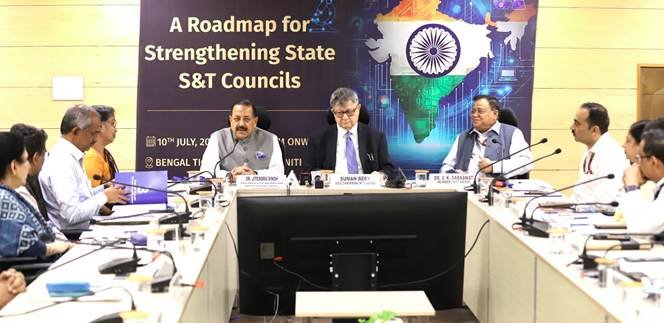Hydro and Stressed Thermal Power Policies
The Cabinet Committee of on Economic Affairs (CCEA) has taken several key decisions for strengthening of the power sector, approving four Hydro and Stressed Thermal Power projects worth over Rs.31,000 crore.
The projects are at Buxar (Bihar), Khurja (UP), Kishtwar (J&K) and Sirwani (Sikkim).
In addition to these, the Cabinet approved measures to promote development of Hydro Power and to alleviate the stress in thermal power projects.
Details of these projects/polices are:
Buxar Thermal Power Project: The CCEA has approved the proposal of Investment approval for 2×660 MW Buxar Thermal Power Project (Buxar TPP) in District Buxar of Bihar at an estimated cost of Rs.10,439.09 crore. The plant will be set up by SJVN Thermal Private Ltd, a wholly owned subsidiary of SJVN Ltd., a Mini Ratna Central Public Sector Unit (CPSU) under the Power Ministry.
The Buxar TPP will be based on Supercritical Technology with two units of 660 MW each, equipped with latest emission control technology to protect the environment and has high efficiency.
The Buxar TPP will improve the deficit power scenario in Bihar and Eastern region. Govt. of Bihar has already signed Power Purchase Agreement (PPA) for supply of 85% of generated power.
The project is expected to generate substantial direct and indirect employment apart from various other socio-economic development in the project area. The Buxar TPP will start generating power from 2023-24.
Khurja Super Thermal Power Plant: CCEA have approved the proposal for setting up a 2x660MW Super Thermal Power Plant (STPP) in Khurja, District Bulandshahar of Uttar Pradesh at an estimated cost of Rs.11,089.42 crores.
It has also approved the funds for the development of the allotted coal block – the Amelia Coal Mine in District Singraulli, Madhya Pradesh at an estimated cost of Rs.1,587.16 crores. The project will be set up by THDC India Limited, a Mini Ratna CPSU under the Power Ministry.
The Khurja STPP will be based on Supercritical Technology with two units of capacity 660 MW each, equipped with latest emission control technology to protect the environment and has high efficiency and uses less fuel to generate power.
Amelia Coal Mine was allotted to THDC India Limited by the Coal Ministry India in January 2017.
The Khurja STPP will improve the deficit power scenario of Northern Region and particularly of Uttar Pradesh, which has already signed Power Purchase Agreement with THDC India Limited for purchase of 60% Power from the Project and the other beneficiary states i.e Uttarakhand, Rajasthan, Himachal Pradesh and Delhi.
The project is expected to generate substantial direct and indirect employment and overall development of District Bulandshahr and nearby districts of Western Uttar Pradesh. The Khurja STPP will start yielding benefits from 2023-24.
KIRU HEP: The CCEA has approved the investment sanction for construction of Kiru HE Project (624 MW) by Chenab Valley Power Projects Private Limited (CVPPPL), at an estimated cost of Rs.4,287.59 crore. CVPPPL, is a joint venture company amongst NHPC, JKSPDC and PTC with equity shareholding of 49%, 49% and 2%, respectively.
The project is located on River Chenab in Kishtwar district of Jammu & Kashmir. It envisages construction of a 135 m high concrete gravity Dam, with installed capacity 624 MW (4 x 156 MW). The Project would generate 2272.02 MU in a 90% dependable year.
The project shall provide much needed power to the Northern grid and shall accelerate the process of development of remote areas of Jammu and Kashmir. The Project is scheduled to be completed in a period of 4.5 years.
Teesta VI HEP: Teesta Stage-VI HE Project is a Run of River (RoR) Scheme in Sirwani Village of Sikkim to utilize the power potential of Teesta River Basin in cascade manner. It consists of construction of a 26.5 m high Barrage across river Teesta.
The project would generate 2400 MUs in a 90% dependable year with Installed Capacity of 500 MW (4×125 MW).
The project was earlier proposed to be developed by a SPV i.e. Lanco Teesta Hydro Power Ltd (LTHPL), promoted by the Lanco Group. However, due to financial crunch, the company could not complete the project on scheduled.
Accordingly, the Corporate Insolvency Resolution Process (CIRP) was initiated by order dated 16 Mar 2018 of Hon’ble NCLT, Hyderabad Bench. In Bidding Process under NCLT, NHPC has emerged as highest bidder with Bid Amount of Rs.907.00 crore. The project, based on an investment proposal of about Rs.5,748.04 crore, is being implemented by NHPC Limited, a CPSU. Following the 7 Mar 2019 approval, a 60-month deadline has been set for project completion.
Stressed Thermal Power Projects: The CCEA has approved the recommendations of Group of Ministers (GoM) constituted to examine the specific recommendations of a High-Level Empowered Committee (HLEC) constituted to address the issues of Stressed Thermal Power Projects.
The Indian Government constituted the HLEC under the Chairmanship of Cabinet Secretary to address the issues of stressed thermal power projects. The committee made its recommendations to resolve the stress in thermal power sector and submitted its report in Nov’ 18. The report of HLEC is available on the website of Power Ministry.
The Government thereafter constituted a Group of Ministers (GoM) to examine the specific recommendations of HLEC and forward its comments for consideration of the Cabinet. Subsequently GoM recommended majority of HLEC recommendations.
The CCEA has approved recommendations of the GoM mainly relating to grant of linkage coal for short-term PPA, allowed existing coal linkage to be used in case of termination of PPAs due to payment default by DISCOMs, procurement of bulk power by a nodal agency against pre-declared linkages, Central/State Gencos may act as an aggregator of power, increase in quantity of coal for special forward e-auction for power sector, coal linkage auctions to be held at regular intervals, non-lapsing of short supplies of coal, ACQ to be determined based on efficiency, payment of Late Payment Surcharge (LPS) made mandatory, non-cancellation of PPA/FSA/LTOA post NCLT scenario and non-cancellation of PPA for non-compliance of COD.
With the implementation of these recommendations, many of the issues affecting the Thermal Power Sector are likely to get resolved.
Measures to Promote Hydropower Sector: In order to promote Hydropower sector, the Cabinet has approved the Proposal of Power Ministry to adopt some measures.
It has been decided to declare Large Hydropower Projects (LHPs i.e. above 25 MW capacity) as Renewable Energy, separate Hydropower Purchase Obligation (HPO) for LHPs commissioned after notification of the measures. Extend budgetary support for flood moderation and enabling infrastructure, i.e., roads & bridges. Methodology for tariff setting has been revised to ensure that tariff is back loaded.
India is endowed with large hydropower potential of 145,320 MW of which only about 45,400 MW has been utilized so far. Only about 10,000 MW of hydropower has been added in the last 10 years. The hydropower sector is currently going through a challenging phase and the share of hydropower in the total capacity has declined from 50.36% in the 1960s to around 13% in 2018-19.
Besides being environment friendly, hydropower has several other unique features like ability for quick ramping, black start, reactive absorption etc. which make it ideal for peaking power, spinning reserve and grid balancing/ stability.
Further, hydropower also provides water security, irrigation and flood moderation benefits, apart from socio-economic development of the entire region by providing employment opportunities and boosting tourism etc.
The importance of hydropower is increasing even more as the country has targeted to add 160 GW of intermittent Solar and Wind power by 2022 and 40% of the total capacity from non-fossil fuel sources by 2030 to honour its Nationally Determined Contribution for Climate Change.
However, DISOMS are reluctant sign Power Purchase Agreements (PPAs) Hydro Power due to higher tariff, particularly, in the initial years. One of the reasons for high tariff of hydropower is the loading of cost of flood moderation and enabling infrastructure in the project cost.
In this backdrop, the decision has been taken to adopt measures to promote hydropower sector including providing budgetary support for flood moderation cost and enabling infrastructure cost and tariff rationalization measures to reduce tariff and thus the burden on the consumer. fiinews.com










